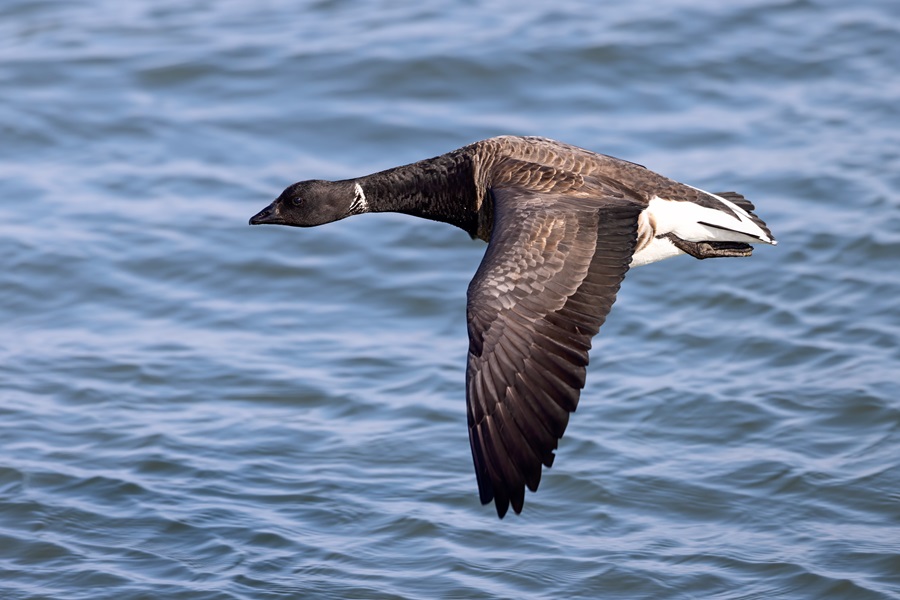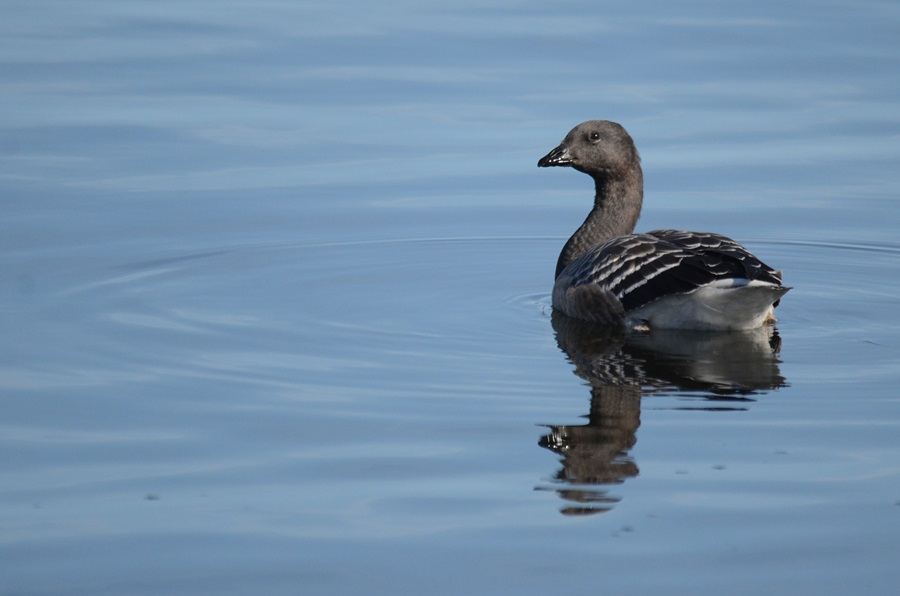Once upon a time, a barnacle was a kind of bird.
Each winter in medieval England, people who lived on the shore watched as their usual waterfowl — the barnyard-looking greylag geese, gleaming white mute swans, and a variety of ducks — were joined by strange, small geese. These geese were short-necked, patterned gray and black, and tended to stick to the coast. They called them bernekkes. Mysteriously, when summer rolled around and the rest of the waterfowl started breeding, the bernekkes seemed to vanish.
This strange goose created a puzzle for early naturalists. No one knew where the bernekkes came from because no one had found a nest of their eggs, and migration was not a well-understood phenomenon at the time.
One popular theory suggested their eggs were laid on rotting driftwood and the bernekkes developed underwater before coming ashore in the fall. The eggs, in this theory, were the hard white structures that cover shipwrecks and rocks: the crustaceans we now call barnacles.

Today, we understand that these geese nest in the high Arctic and then winter farther south. But debate about the myth of the barnacle-geese raged up until the 18th century, by which point the Anglo-Latin word for these birds had stuck to the animals we once thought were their eggs. The geese themselves are now recognized to be two species: there’s the barnacle goose, an exclusively European bird, and the brant, which is found in both Europe and North America.
In North America, indigenous people probably understood the goose’s vanishing and reappearing better than their counterparts across the Atlantic did. Different indigenous cultures have stories that describe bird migration, like the Athabasca story of the raven and the goose who fell in love but had to separate in winter when the goose migrated south.
The brant’s migration spectacle is as strong today as ever, and Cape Cod Bay is one of many places on the East Coast where they spend the winter. At first glance, brants look a lot like Canada geese, but they are smaller, have stouter proportions, and lack the white cheek patch of Canada geese, instead having a white splotch partway down the neck. Their honks also have the rattly, squeaky quality of a chew toy.
The two species’ choice of habitat is also remarkably different. Canada geese are generalists and will visit nearly any freshwater wetland or open field they can find. Brants, meanwhile, are nearly exclusively saltwater birds, preferring sheltered beaches and calm bays to rivers and ponds. On the Outer Cape, they are mostly found on the bay side: go to Mayo Beach, Lieutenant Island, or Provincetown Harbor in the winter and you’re likely to spot a flock of these geese. But in spring they begin winging their way north and are nearly all gone by the end of May.
Seeing the flocks of brants that dot Cape Cod beaches and bays, it is clear they are doing well. The International Union for Conservation of Nature lists them as being of “least concern,” that is, not threatened with extinction.
So, it might come as a surprise that less than 100 years ago, they nearly vanished from the East Coast entirely.

In the winter, brants are deeply tied to one food source: eelgrass, a ribbon-like seagrass that is found up and down the northeast coast — and they will go to great lengths to get it. A U.S. Geological Survey study reported in 1980 that flocks of brants in New Jersey had developed a “commensal” relationship with humans. They were found following clam fishing boats that were harvesting near the shore where, as the fisherman tore up eelgrass from the depths in their work, the geese feasted on this otherwise unavailable food supply.
In 1931, a seagrass blight nearly wiped out these birds. First, a parasitic marine slime mold called Labyrithula zosterae suddenly became virulent; then eelgrass populations collapsed along the Eastern seaboard. Density of the grass dropped by 99 percent in two years, and areas that were once so thick with eelgrass you couldn’t steer a boat through them suddenly turned barren.
The geese starved, and in three years, the East Coast population fell to a fifth of its pre-blight numbers. In some areas, populations dropped by as much as 95 percent. It seemed like the East Coast brant would become a thing of the past.
But the birds seem to have adapted. The few that survived did so by expanding their diets, eating saltmarsh cordgrass and an algae known as sea lettuce. In some areas, they even pushed inland, eating grasses and clovers on golf courses and manicured lawns. The population rebounded. Even today, with eelgrass recovered somewhat, sea lettuce can make up around half the winter diet of these brants.
The brant collapse of 1931 was one of the first recognized examples of a migratory bird species suffering because of changes to its wintering grounds. We were lucky that brants recovered on their own. For most migratory birds, conservation is focused on their breeding grounds, and we protect the forests and tundra where warblers, shorebirds, and raptors breed in the U.S. and Canada, but we tend to forget about them when they’re wintering in the tropical forests and wetlands of Latin America. And they suffer for it.
These migratory birds must contend with a whole suite of challenges on their wintering grounds, from poaching to habitat loss. If we’re really going to protect these birds, international collaboration will be needed to help them throughout their life cycles.
Considering how little we know of what our summer birds do in the winter, maybe we are not too different from those medieval Europeans who thought their winter geese spent the summer as barnacles.



